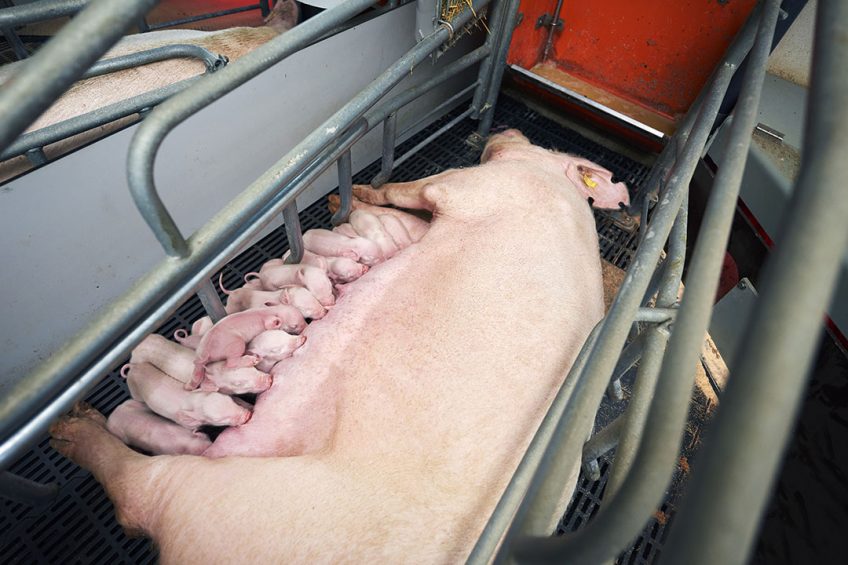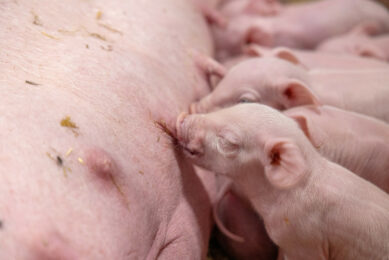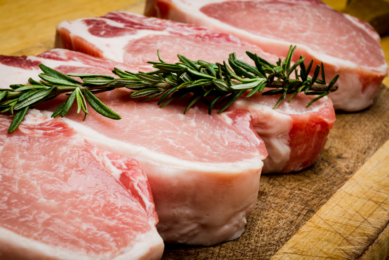Data model to avoid chromosomal defects

During the formation of egg and sperm cells, or the separation of chromosomes immediately after conception, errors might occur that can affect fertility. The Danish Pig Research Centre (DPRC) has developed a model to minimise the risk of such chromosomal defects.
In all mammals, humans and pigs included, the body consists of trillions of cells. These cells contain the genes that are necessary for body functions. The genes are encoded in the DNA that is coiled into structures called chromosomes.
For instance, pigs have genes that promote their daily weight gain, their ability to survive or their fertility in comparison to other pigs. The essence of the DanBred breeding programme, which is managed by the Danish Pig Research Centre (DPRC), is to continuously mate the pigs with the best genes to improve these traits for all future generations. However, chromosomal defects may occur when genes are passed on between generations.
Sow and boar fertility is the goal
The risk of inherited chromosomal defects, such as the ‘translocations’, may be reduced substantially. During the formation of germ cells, the chromosomes are segregated to pass on half of the gene pool to the offspring. In the earliest stage after conception, the chromosomes of the sow and boar fuse together, and their offspring inherits half of the genes from the dam and half from the sire. Occasionally, this fusion of the chromosomes is defective. A reciprocal translocation is a defect where parts of non-matching chromosomes are fused, so that, for example, part of chromosome 7 is fused to chromosome 14 and vice versa. This may sometimes result in reduced fertility.
TranslocationsIn the earliest stage after conception, chromosomes first segregate within the gametes or haploid cells, and then when joined, the chromosomes from the boar and the sow fuse together. Thereby, the offspring inherit half of their mother’s and half of their father’s genes. However, in a few cases the segregation or fusion is imperfect. Part of one chromosome, e.g. chromosome 1, may be swapped with part of another chromosome, e.g. chromosome 7. In some cases, such a translocation results in some genes no longer being expressed correctly, which may ultimately lead to reduced fertility. |

Not all translocations affect pig fertility
In a French study of several pig breeds, inherited translocations were estimated to appear in about 1 in 200 normal functioning young purebred boars (0.5%). However, far from all translocations affect the fertility of pigs. Therefore, AI boars should not necessarily be culled just because a translocation has been detected.
Therefore, the DanBred breeding programme focuses on targeting translocations and other possible chromosomal defects that adversely affect fertility, while simultaneously maximising genetic gain.

Today 30 piglets or more weaned per sow per year is not unusual. Is management always well prepared for that? Find out more…
Accurate testing is key
There are at least 2 options to test for the presence of chromosomal defects such as translocations:
- The cheapest method is karyotyping, which costs minimal € 65/animal. However, it is also a relatively inaccurate test, and it may incorrectly show a chromosomal defect or fail to detect actual defects. It is, therefore, risky to use only karyotyping as the criteria for the final approval of an AI boar.
- The alternative method (FISH test) is by far more accurate but also more expensive, costing at least € 270/animal. For economic reasons alone, this is therefore not a feasible solution in a commercial breeding programme with thousands of potential AI boars annually.
Most importantly, both tests incorporate the risk of culling top breeding boars with no problematic translocations – and thereby risk losing genetic progress. Instead, the DPRC has developed a data-based model that protects the breeding programme from any chromosomal defects that have detrimental effects on fertility.

Housing and welfare expert Vivi Aarestrup Moustsen describes what the Danes are doing in the area of higher neonatal piglet survival. Find out more…
Progress driven by data
To protect the breeding programme from any detrimental chromosomal defects, a data-based model was developed and integrated in the selection for the trait “male fertility” in DanBred Duroc in 2015 and for the trait LP5 (live piglets on day 5 after farrowing) in DanBred Landrace and DanBred Yorkshire in 2016.
In order to identify boars or sows with a translocation detrimental to fertility, the DPRC investigates their estimated breeding values for the traits male fertility and LP5. If the breeding value is substantially lower than expected, i.e. lower than what might be caused by random fluctuations, then this is a clear indication of chromosomal defects being the cause. Consequently, the animal will no longer be useful as the breeding nucleus, and its offspring will not be good selection candidates for the next generation. This way, it is possible to prevent chromosomal defects in AI boars that would have otherwise been detrimental to reproduction results in production herds. Moreover, it is also possible to prevent the passing on of detrimental chromosomal defects to future generations.
This data-based model ensures that breeding is continued with only the best selection candidates in the breeding programme to achieve the highest possible genetic progress.











